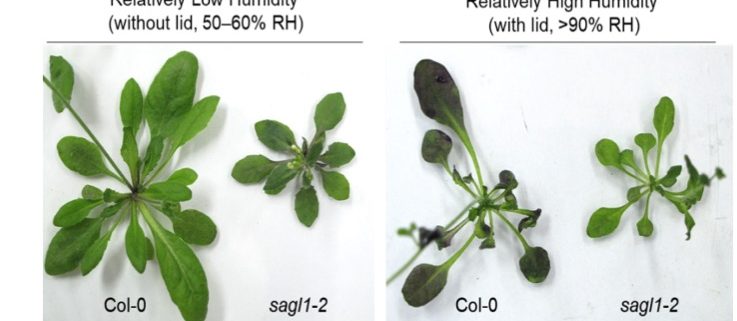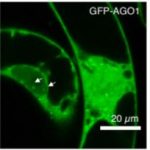SAGL1-CER3 Function in Cuticular Wax Biosynthesis in Response to Humidity
Kim et al. reveal how the SAGL1-CER3 module regulates cuticular wax biosynthesis in response to ambient humidity. Plant Cell https://doi.org/10.1105/tpc.19.00152
By Hyojin Kim and Mi Chung Suh, Department of Life Science, Sogang University, Republic of Korea
Background: The hydrophobic cuticle covers the primary aerial surfaces of land plants and serves as a defensive barrier against various abiotic and biotic stresses. Thus, the regulation of cuticle formation is essential for the optimal growth and development of plants under various environmental conditions. Recent advances in our understanding of the molecular mechanisms underlying cuticle biosynthesis underscore the importance and complexity of its regulatory networks.
Question: We previously observed that total wax loads are differentially deposited in an organ-specific manner and in response to changing environments. In particular, significantly higher levels of cuticular waxes are deposited in the cuticles of plants grown under arid vs. high humidity conditions. In this study, we aimed to understand how land plants differentially control cuticular wax biosynthesis in response to changes in ambient humidity.
Findings: The Arabidopsis thaliana Kelch repeat F-box protein SMALL AND GLOSSY LEAVES1 (SAGL1) mediates proteasome-dependent degradation of ECERIFERUM3 (CER3), a biosynthetic enzyme involved in the production of very long chain alkanes (the major components of wax), thereby negatively regulating cuticular wax biosynthesis. SAGL1 transcript and protein levels increase under high ambient humidity (>90% RH), whereas the high humidity-induced expression of SAGL1 is repressed by exposure to abscisic acid or low humidity, suggesting that the SAGL1-CER3 module plays a key role in regulating cuticular wax biosynthesis in Arabidopsis in response to different humidity conditions, e.g., drought and flooding.
Next steps: Future research will focus on understanding the molecular mechanisms underlying the proteasome-dependent degradation of SAGL1 and the regulatory networks underlying cuticular wax biosynthesis under different humidity conditions.
Hyojin Kim, Si-in Yu, Seh Hui Jung, Byeong-ha Lee, Mi Chung Suh. (2019) The F-box Protein SAGL1 and ECERIFERUM3 Regulate Cuticular Wax Biosynthesis in Response to Changes in Humidity in Arabidopsis. Plant Cell. https://doi.org/10.1105/tpc.19.00152.
Key words: cuticular wax, ECERIFERUM3, F-box protein, humidity, ubiquitin-proteasome system




